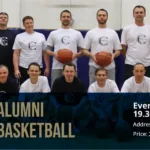Why Me? Rethinking Identity, Purpose, and the Illusion of Misfortune
It’s often in the quiet aftermath of hardship that a voice arises within: “Why me? Why now?” For some, this question appears regularly. For others, it lingers quietly in the background of their lives, surfacing only during moments of reflection or crisis.
Many try to ignore it—distracting themselves with routines or achievements. But for those who pause and listen, it becomes a call to explore something deeper: identity, meaning, and purpose. And while some people never confront this question, almost everyone, at some point, will pause and ask, “Why am I me?”
The Essential Inquiry
“Why me, here, now?” is more than a reaction to difficulty—it’s a gateway into some of life’s most profound questions. These three questions have stood at the center of spiritual traditions, philosophical debates, and personal transformations for centuries. They mark the beginning of what many call a spiritual journey—a process that seeks clarity around who we are, what matters, and why we’re here.
This journey begins with a shift in focus: before you can ask “Why me?”, you must ask, “Who is me?” Countless thinkers throughout history have said the same thing: if you can truly answer “Who am I?”, everything else will fall into place. Ironically, it’s the one question that can never be answered with certainty—because the real answer lies beyond words and beyond thought. But exploring it brings insight, and insight brings clarity.
The journey unfolds in three interwoven movements: elimination, realization, and re-memorization.
1. Elimination: Shedding False Identities
Think of this stage as peeling away the many layers you’ve mistaken for yourself—labels, roles, achievements, memories. Start by asking: What am I not? You’ll quickly realize that you are not your nationality, profession, gender, beliefs, or even your thoughts and feelings. These are all temporary. They come and go, yet you remain.
As you continue this process of elimination, a quiet truth begins to emerge: at your core, you are awareness. You are the one who is aware of being aware. And that awareness isn’t a concept—it’s an experience.
2. Realization: Seeing the Self as Awareness
What remains when all external and internal labels are dropped? Not emptiness, but presence. Pure awareness. This realization doesn’t strip you of identity—it restores your true one.
This awareness feels expansive, freeing, and deeply peaceful. It’s the absence of striving, defending, and resisting. You begin to see that much of your stress and suffering came from defending false identities, clinging to possessions, and resisting what is.
Still, this stage can feel uncomfortable. Without the familiar identity structures, the ego might resist. It may cling to the idea that struggle is necessary or that pain is part of life. But even that resistance is part of the illusion.
3. Re-Memorization: Living from Awareness
Even after realizing your true nature, it’s easy to forget. Old habits and identities creep back in. That’s why re-memorization—the daily practice of remembering who you are—is essential. It’s not about adding something new to your mind, but returning to the quiet, inner knowing that was always there.
Over time, this practice becomes a stabilizing force. The old patterns lose their power. You stop reacting from fear, attachment, or insecurity. Your presence becomes steadier, and your perception of life begins to shift.
A clear sign of this transformation is when you stop seeing others as enemies, stop viewing life as a battle, and begin to relate to the world with compassion and openness.
The Disappearance of “Why Me?”
As you awaken to your true self, the question “Why me?” fades. It no longer makes sense. You no longer need a reason to exist. Being is enough. Life, as it is, becomes enough.
Why me? is born from a lack of self-awareness. It arises when the self is ignored—when we’re too entangled in our roles, possessions, and stories. Letting go of these attachments is not about losing who you are—it’s about reclaiming who you’ve always been.
Final Reflection
Even death—the ultimate source of fear for many—is misunderstood. It’s not life’s end we fear, but the end of our personal story. We’ve spent a lifetime building an identity around possessions, relationships, and roles. The idea of losing all that feels like losing ourselves.
But when we realize that we never truly possessed anything—not people, not things, not even our story—the fear dissolves. Letting go becomes possible. So does peace.
The great spiritual traditions weren’t just offering comfort—they were offering clarity. They urged us to let go, not cling. To live here, now. Fully.
Questions for Inquiry
- Question: What stops most people from deeply exploring who they truly are?
- Reflection: Sit quietly. Watch what arises in your awareness. Let it pass. Then notice what stays.
- Action: At the end of each day this week, reflect on where you may have misidentified with something external. What beliefs or roles took you away from your deeper self?
Written by our professor Mike George.







